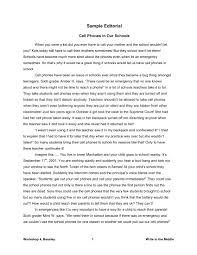
Mastering the Art of Crafting Compelling Articles: A Guide for Writers
The Art of Writing: Crafting Compelling Articles
Articles are a fundamental form of written communication that serve to inform, educate, and entertain readers on a wide range of topics. Whether you’re a journalist, blogger, or content creator, mastering the art of crafting compelling articles is essential to engaging your audience and conveying your message effectively.
One key element of a successful article is a strong headline that captures the reader’s attention and entices them to delve into the content. A catchy headline should be concise, descriptive, and relevant to the main idea of the article.
When structuring your article, consider organizing your thoughts into clear sections with headings and subheadings to guide the reader through the content. This helps create a logical flow and makes it easier for readers to navigate the information presented.
Engaging introductions are crucial for drawing readers in and setting the tone for the rest of the article. Start with a compelling hook or an intriguing question to pique curiosity and encourage readers to continue reading.
Supporting your points with evidence, examples, or data adds credibility to your writing and helps reinforce your main arguments. Be sure to cite reputable sources when including factual information or statistics in your article.
Concluding your article with a strong ending that summarizes key points or offers a call to action can leave a lasting impression on readers. Consider ending with a thought-provoking quote, a reflective question, or a suggestion for further reading on the topic.
Finally, don’t forget about the importance of editing and proofreading your article before publishing. Check for grammatical errors, typos, and inconsistencies in style to ensure that your writing is polished and professional.
In conclusion, crafting compelling articles requires attention to detail, creativity, and dedication to engaging your audience. By following these tips and honing your writing skills, you can create articles that inform, inspire, and resonate with readers across various platforms.
7 Essential Tips for Crafting a Compelling Article
- Choose a clear and engaging title.
- Start with a strong introduction to hook the reader.
- Organize your article with headings and subheadings for better readability.
- Use evidence and examples to support your points.
- Proofread your article for grammar and spelling errors.
- Conclude with a summary or call to action.
- Cite your sources if you include external information.
Choose a clear and engaging title.
Selecting a clear and engaging title is a crucial step in capturing the reader’s interest and setting the tone for your article. A well-crafted title should succinctly convey the main idea or theme of the piece while also intriguing the audience to delve deeper into the content. By choosing a title that is descriptive, compelling, and relevant to the article’s subject matter, you can effectively draw readers in and entice them to explore what lies within the pages of your writing.
Start with a strong introduction to hook the reader.
To hook the reader from the start, crafting a strong introduction is essential. An engaging opening sets the tone for the entire article, drawing in the reader’s attention and sparking their curiosity. Whether it’s a captivating anecdote, a thought-provoking question, or a startling statistic, a well-crafted introduction piques the reader’s interest and entices them to continue reading to discover more about the topic at hand. By starting with a compelling introduction, writers can establish a connection with their audience and lay the foundation for an informative and engaging article.
Organize your article with headings and subheadings for better readability.
Organizing your article with headings and subheadings is essential for enhancing readability and guiding readers through the content effectively. By structuring your writing into distinct sections, you create a visual hierarchy that makes it easier for readers to navigate and digest the information presented. Headings and subheadings not only break up the text into manageable chunks but also provide a roadmap for readers, allowing them to quickly scan for key points or sections of interest. This organizational strategy improves comprehension, engagement, and overall user experience, making your article more accessible and impactful to a wider audience.
Use evidence and examples to support your points.
In writing articles, it is essential to use evidence and examples to support your points effectively. By providing concrete evidence and real-life examples, you not only enhance the credibility of your arguments but also help readers better understand and connect with the information you are presenting. Evidence and examples serve as pillars that strengthen your narrative, making your article more persuasive, informative, and engaging for your audience.
Proofread your article for grammar and spelling errors.
Ensuring the accuracy of your writing is paramount; therefore, it is crucial to meticulously proofread your article for grammar and spelling errors. By carefully reviewing your work, you can maintain the professionalism and credibility of your content, while also enhancing its readability and impact on the audience. Attention to detail in this aspect not only reflects your commitment to quality but also helps to effectively convey your message without distractions or misunderstandings.
Conclude with a summary or call to action.
Concluding an article with a summary or a call to action is a powerful way to leave a lasting impact on readers. A well-crafted summary can reinforce key points and ensure that the main message resonates with the audience. On the other hand, a compelling call to action can inspire readers to take the next step, whether it’s engaging further with the topic, sharing their thoughts, or participating in a meaningful cause. By providing closure and direction in the conclusion of an article, writers can guide readers towards deeper understanding or encourage them to make a positive change based on the information presented.
Cite your sources if you include external information.
When incorporating external information into your article, it is essential to cite your sources to provide credibility and transparency to your writing. By acknowledging the sources of your information, you not only give credit to the original creators but also demonstrate integrity and respect for intellectual property. Properly citing sources also allows readers to verify the accuracy of the information presented and encourages a culture of academic honesty and responsible journalism.









-
Tagged beach-inspired accents, coconut shells, colorful decor, delicious bites, exotic cocktails